My mom says that the fifteen years I spent watching my tap teacher’s feet helped me to learn speed skating technique. That tap teacher’s name is Ann Marie Frank. The combined process of observing a dance step, receiving instruction and then practicing the same series of movements over and over again, primed me to be a good visual learner at the ice rink.
Carolyn in Miss Ann Marie’s dance class in 1993 (center, wearing black)

Carolyn on the Ice
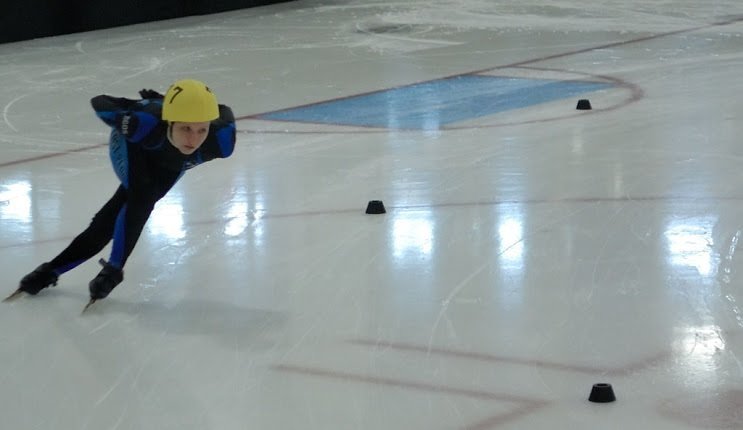
My mother’s comment reminds me that she and I share an awareness that dance played many vital roles in my development through adolescence and into my young adult life. Now at age 27, as I pursue a dream to one day compete in the Winter Olympics in Long Track Speed Skating, I am thankful for the values that dance gave me. In the 1990’s when tie-dye and spandex ruled the dance world, Miss Ann Marie taught me to cherish the art of practice and use it as endless source of inspiration.
Carolyn & Miss Ann Marie – June 1999 Recital
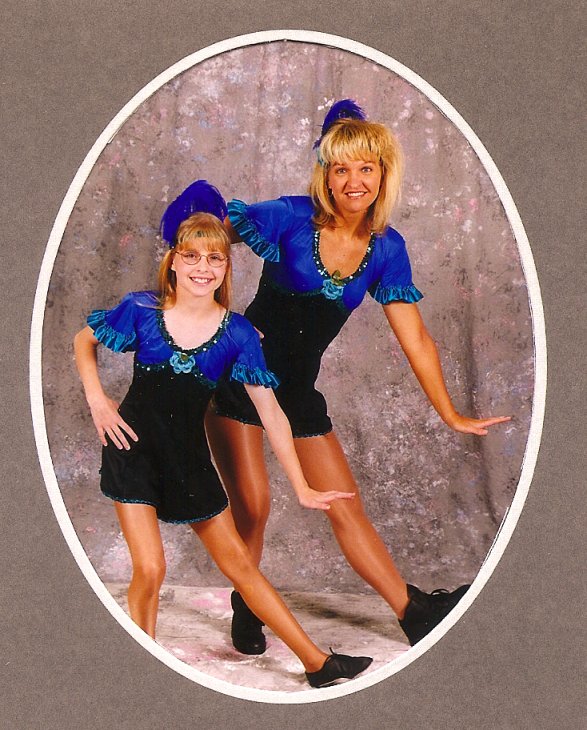
The art or sport of dance, whichever one prefers to label it (although, I’ll argue that it’s both), trained me in the principles of discipline. Like shuffles, flaps, and toe-heels—the absolute very basics of tap dancing—routines, patterns, and commitment enable disciplined behavior; there’s structure with an added element of freedom to encourage individual creativity and provide ongoing motivation. Without motivation, any effort to develop discipline eventually diminishes, or in the worst cases, vanishes completely and leaves the practitioner feeling discouraged and uninspired.
In Miss Ann Marie’s class, my motivation came from the sound my shoes made on the wooden floor. I received great joy from learning how to control, as well as vary the rhythm and speed that came from my feet. Simply put, I loved tap dancing. That was my passion, my internal motivation, but my external motivation was just as important and that came from Ann Marie.
Carolyn & Miss Ann Marie – June 1993 Recital
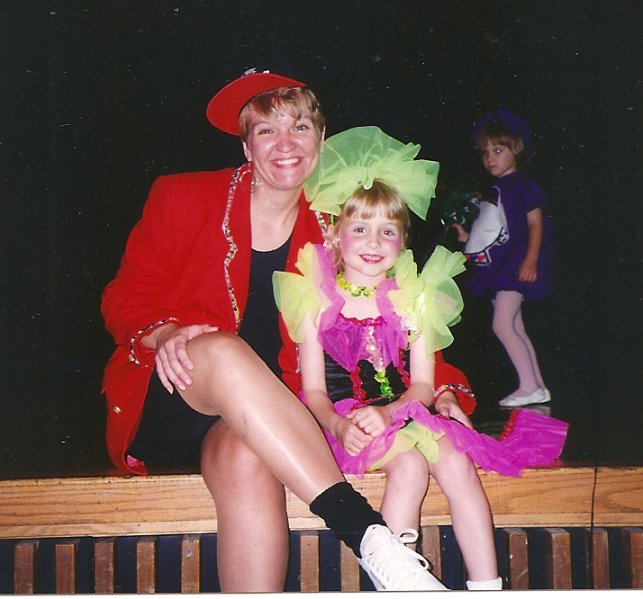
She’s another reason that I woke up every Saturday morning for at least eleven years and went to tap class where I engaged in those routine patterns that created a foundation for developing discipline. Miss Ann Marie made class inspiring and fun. For instance, she taught in progressions so that we could see ourselves improve. She gave us time to practice on our own and always encouraged us to go home and practice again. It was because of her positive attitude and belief in me is what kept me coming back for more. She believed in all of us. She made the dance room a place that encouraged diligence in a carefree yet structured environment, one where I could simultaneously concentrate on mastering a triple time step, while laughing with my friends and enjoying the best of Bruce Springsteen.
When utilized in tandem, internal and external motivation empowers the mind and body to persevere. They provide inspiration to overcome, not just adversity, but also the gradual and sometimes perpetual feelings of discouragement that are produced from the day in and day out efforts that seem to yield no visible results. I have memories of wearing an oversized red sweater and sheer black tights in my basement, as I used the cement floor to practice my tap steps. To me, that image reflects the power of internal and external motivations working together to support and maximize the disciplinary process. Miss Ann Marie was my encourager and a role model, who helped me to see the bigger picture. Dance was a passion.
Although my workout attire looks different today, I still go into the basement and practice series of speed skating specific drills and progressions that help me perfect my technique. And, it’s in practice that I am free to be creative and approach challenges from multiple angles. Learning to value the art of practice is one of the best gifts that I received from dance. Training is that much more enjoyable, I’m focused on the present, and, still, I am aware of the benefits that come from a longer sustained effort.
The AMA philosophy truly enriched my life and gives me hope for an Olympic future.
Speeding Around the Rink
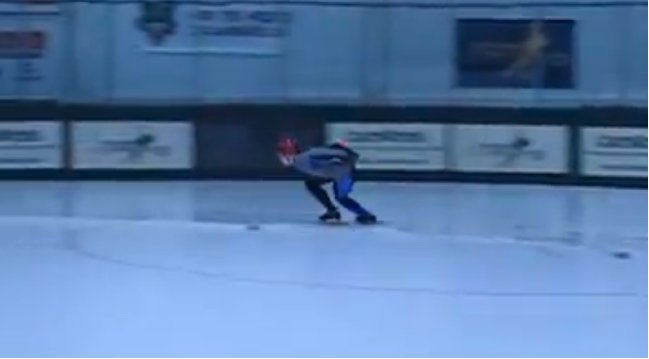
Physically, dance helped to prepare my body for speed skating. Tap, ballet, and jazz improved my balance, coordination, flexibility, and rhythm, all four of which affect my ability to control and manipulate the specific skating motions that can apply the most power and pressure into the ice. If I perform the movements correctly, then I will skate faster.
Similar to dance choreography, the muscular contractions and anatomical functions in speed skating need to be timed and synchronized to produce the desired outcome. A dance routine can tell us a story, but the same elements that create that masterful display of style and artistry (i.e. strength, power, and grace) can be found in speed skating, too.
CONCLUDING THOUGHTS FROM CAROLYN
 My dance background helps me to persevere and reminds me to focus my vision on a plan for progressive development.
My dance background helps me to persevere and reminds me to focus my vision on a plan for progressive development.
- Discipline involves a commitment to practicing a particular skill or action until it becomes habitual.
- Internal and external motivation
- Motivation is as essential to developing discipline as the metal on the bottom of a tap shoe.
- Passion begets perseverance through creativity, but external motivation
In a long open room paneled with wooden floors and edged with ballet bars, Miss Ann Marie created a space where my friends and I could learn together and be a team together.
- A model for long term development
- Prepared with a vision for progressive development
Dance framed my value system for teaching nutrition and healthy lifestyle habits that support the human body towards a fuller expression of excellence and glory.
- Body image
Want to see Ann Marie leading a tap class today? This post features a video from Bring-A-Friend Week and Tap II!
Would you like to learn more about enrolling your child at AMA? We’d love to talk to you! Call us today at 847-299-2233 or visit our Registration page.
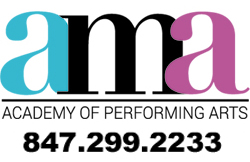
Leave A Comment